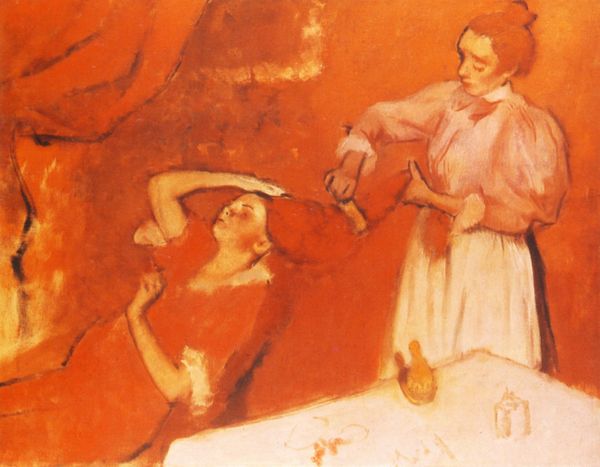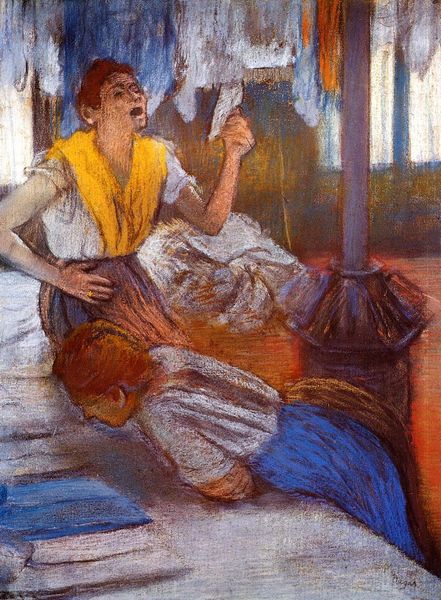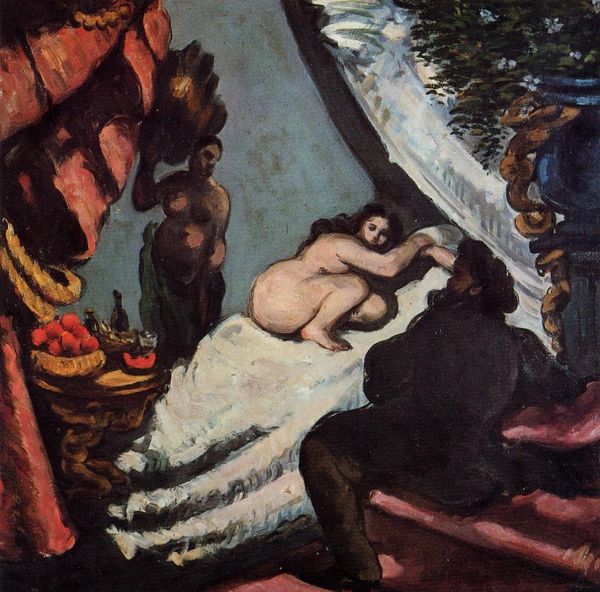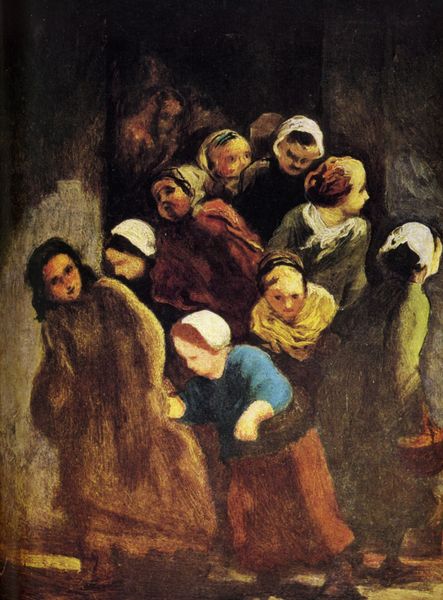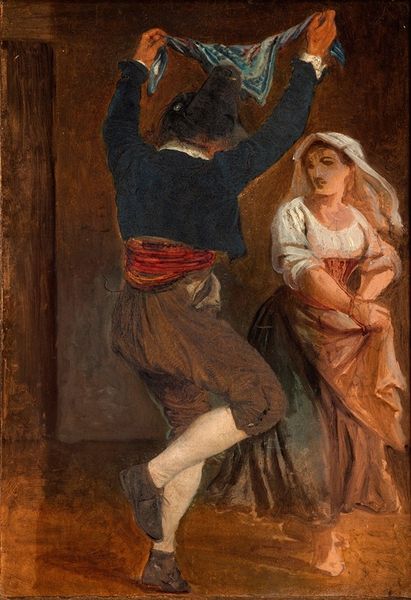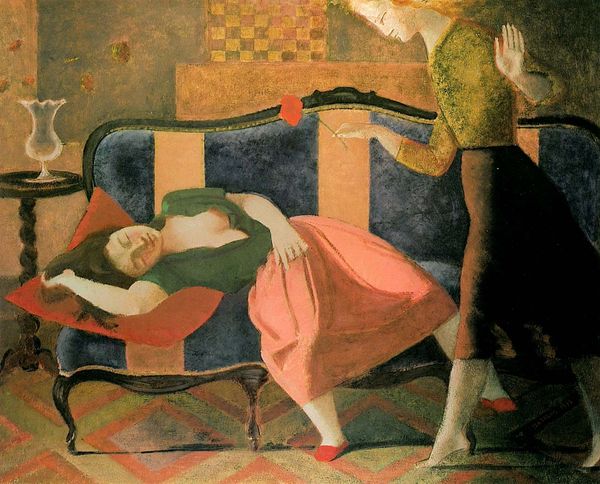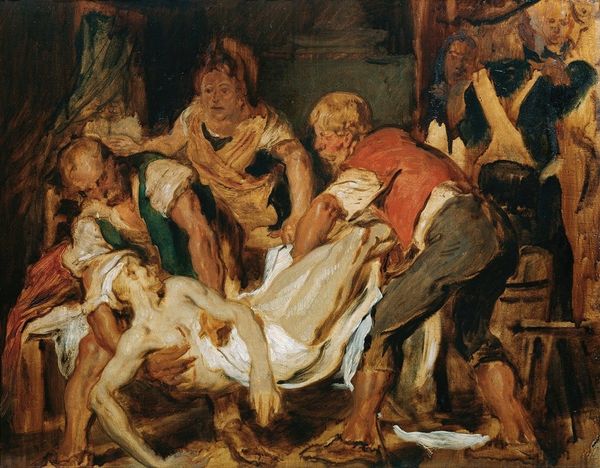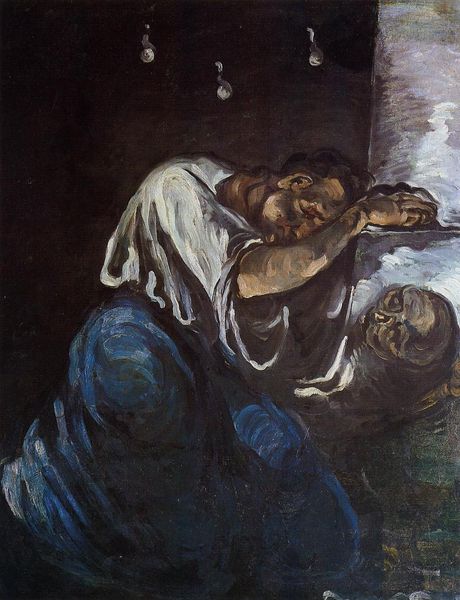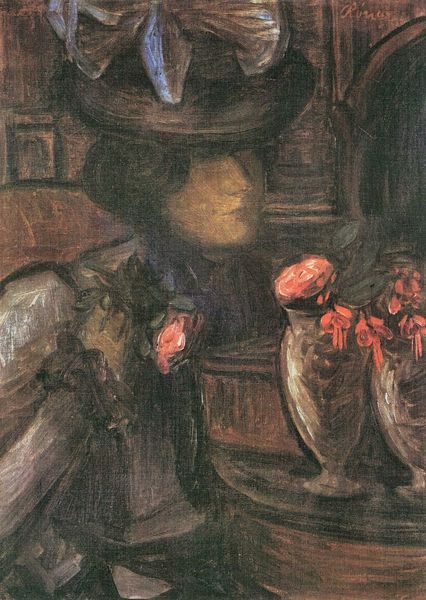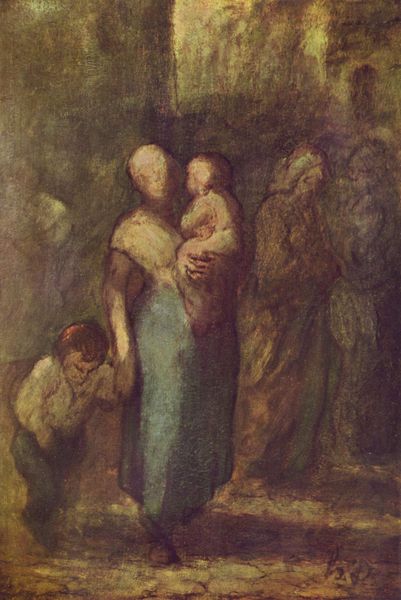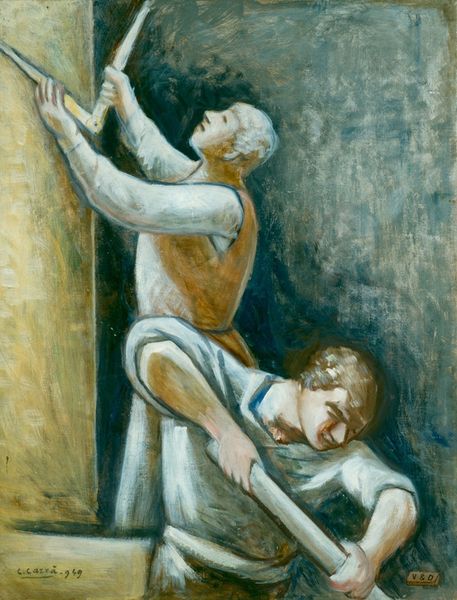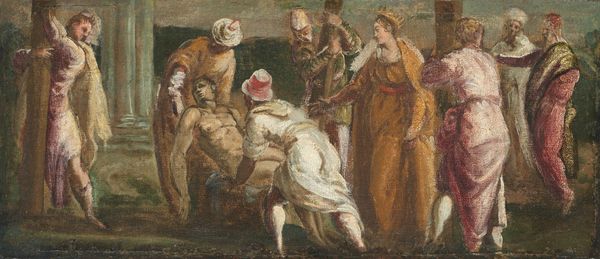
painting, oil-paint, impasto
#
painting
#
impressionism
#
oil-paint
#
landscape
#
figuration
#
oil painting
#
impasto
#
genre-painting
#
modernism
#
realism
Copyright: Public domain
Curator: Standing before us is Edgar Degas’ "Laundry Girls Ironing," an oil on canvas completed in 1884. It's currently housed in the Musée d'Orsay in Paris. Editor: My first impression is exhaustion. The composition feels unbalanced, deliberately so, enhancing this palpable weariness. Curator: The skewed perspective is crucial. Degas moves away from academic precision to foreground a gritty, almost confrontational realism. Consider the tension between the gestural brushwork and the stark subject matter. Editor: Absolutely. It’s less about representation and more about the conditions of labor. Look at the iron itself—a heavy, hand-operated object demanding repetitive motion. You can almost feel the weight of it, the oppressive heat in this workshop. Curator: Precisely, there is something very tactile, not only in its heavy, materialized impressionist facture but also by depicting laborers at work—rendering something visually resonant for the rising classes. How do the flattened planes of color emphasize the physical strain? Editor: These materials aren't romantic. It's honest labor visualized. These women's clothing and working conditions weren’t some appealing backdrop to artistic endeavor, this labor provided that freedom for Degas. Curator: One could read that yawning figure as emblematic of the ennui inherent within capitalist structures, revealing an undercurrent of modern alienation within even genre painting. Editor: Degas is exposing what it took for privileged members of society to enjoy cleanliness, neatly pressed clothes. That bottle hints too, at possibly a coping mechanism for hard labor. It is hard to miss how painting offers social commentary beyond just its aesthetic qualities. Curator: Yes, Degas prompts us to reflect on not merely the "what" but also the "how" of existence. By breaking conventions, like atmospheric and linear perspective, he invites closer readings, challenging established codes and ideologies, beyond his own class limitations of vision. Editor: For me, viewing it through its materials, the social relations, and the women's work makes visible their exploitation in a rapidly changing capitalist world. It also asks what is at stake, beyond its pretty picture, that needs to be interrogated now more than ever.
Comments
No comments
Be the first to comment and join the conversation on the ultimate creative platform.
